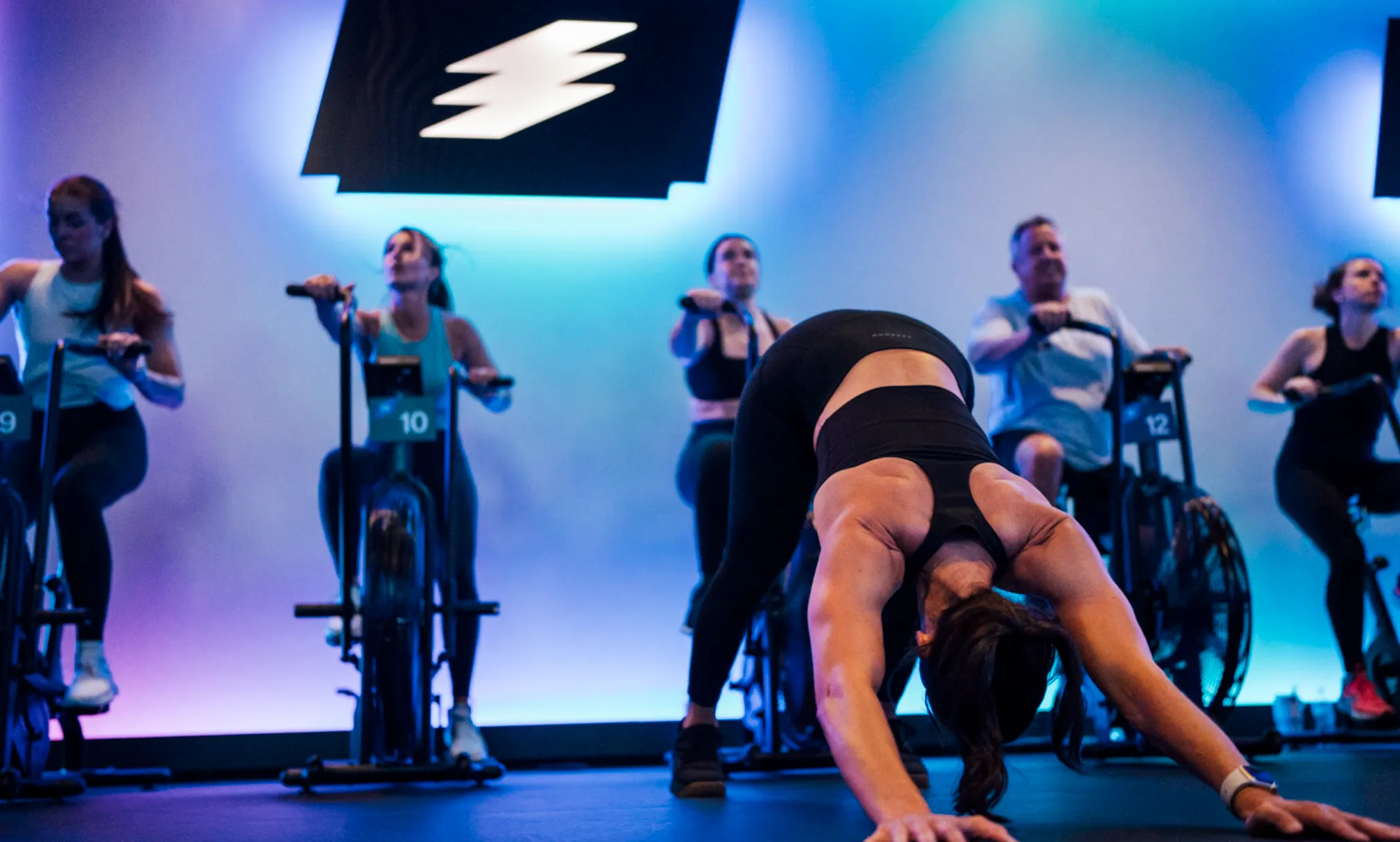Discover why stretching after a workout is essential for recovery, flexibility, and long-term performance. Learn the key benefits- like reducing soreness, preventing injuries, and improving mobility; plus the best types of stretches to include in your cool-down routine.
6 minutes
Stretching is often the most overlooked part of a fitness routine.
After finishing a tough workout, many people head straight for the shower or grab their post-workout snack, skipping what might be the most critical few minutes: stretching. But understanding why it’s important to stretch after a workout goes beyond just winding down. This practice helps your muscles recover, reduces soreness, and supports long-term flexibility and mobility.
In short, it’s the bridge between today’s hard work and tomorrow’s readiness to do it again.

When you exercise, your muscles contract repeatedly, creating microscopic tears in the fibers. These small tears, known as exercise induced muscle damage (EIMD), are a normal part of building strength and endurance and trigger repair processes that make muscles stronger.
Alongside this, your body produces lactic acid when energy demand outpaces oxygen supply, contributing to that familiar burning sensation during intense effort. While lactic acid clears quickly, the microtears can cause delayed onset muscle soreness 24–72 hours later. Your heart rate and breathing are elevated, and your muscles tighten from exertion. Without proper cool down and stretching, these tightened muscles may remain shortened and stiff, potentially slowing the recovery process and limiting range of motion.
Stretching after exercise helps your body transition back to a resting state. It restores muscle length by resetting tight, shortened muscles to their normal state, supports the cool-down phase by gradually lowering heart rate and breathing instead of stopping suddenly, and promotes circulation by increasing blood flow to repair muscle tissue and flush out waste products. In essence, stretching is like pressing the reset button for your muscles after they’ve been working hard.
1. Reduces Muscle Soreness: Stretching can ease muscle tightness and make soreness less intense. Delayed Onset Muscle Soreness (DOMS) often peaks a day or two after exercise. Stretching won’t eliminate soreness entirely, but it can reduce stiffness and discomfort by promoting circulation and easing lactic acid build-up. According to the Mayo Clinic, light stretching can help decrease muscle tension and improve comfort during recovery.
2. Improves Flexibility and Range of Motion: Stretching makes muscles more flexible and movement smoother. Consistent post-workout stretching increases flexibility over time, making movements more fluid and reducing the likelihood of strain. This is especially valuable for athletes and anyone wanting to maintain mobility as they age.
3. Supports the Recovery Process: Stretching helps muscles repair faster. Stretching helps muscles receive the oxygen and nutrients they need to repair microscopic tears. This accelerates recovery, meaning you can return to training sooner and with less discomfort.
4. Reduces Risk of Injury: Stretching keeps muscles supple and lowers injury risk. Tight muscles are more prone to pulls and tears. Stretching keeps them flexible, lowering the risk of injury in future workouts or daily activities. Harvard Health notes that flexible muscles help prevent strains and joint stress.
5. Relieves Pain and Stress: Stretching relaxes the body and mind. Stretching isn’t only physical, it also signals your nervous system to relax. Many people experience pain relief, stress reduction, and even better sleep when they incorporate stretching into their routine.

Not all stretches are created equal. After a workout, certain types are especially effective. Static stretching involves holding a stretch for 20–60 seconds, such as a hamstring or quad stretch, and is best for cooling down. PNF stretching, a contract-and-relax method often done with a partner or resistance band, is especially effective for deep flexibility gains. In contrast, you should avoid ballistic stretching after a workout, as bouncing movements can strain tired muscles and increase the risk of injury.
Many people confuse cooling down with stretching, but they serve different purposes:
Cool-down: Light cardio movements (walking, slow cycling) that gradually lower your heart rate and body temperature.
Stretching: Focused lengthening of specific muscles to improve flexibility and recovery.
The best practice? Do a few minutes of light cardio, then stretch.
• Duration: Spend at least 5–10 minutes stretching after each workout.
• Frequency: Stretching post-exercise is ideal, but adding dedicated flexibility sessions (like mobility work) 2–3 times per week maximizes results.
• Technique: Hold each static stretch without bouncing. Deep breathing helps release muscle tension.
While stretching has many benefits, there are times when it’s not the right choice. Don’t stretch cold muscles (always warm up first). Avoid stretching immediately after acute injuries like sprains or muscle tears. Skip deep stretching if muscles feel extremely fatigued so focus on light movement and gentle recovery instead.
Even though stretching is beneficial, doing it incorrectly can backfire. Avoid these common mistakes:
1. Overstretching: pushing too far can cause strains.
2. Skipping the Cool-Down: stretching cold muscles increases injury risk.
3. Rushing Through: holding each stretch for only a few seconds doesn’t give the body enough time to relax.
• For Beginners: Focus on major muscle groups like hamstrings, quads, and shoulders. Hold each for 20–30 seconds.
• For Runners: Prioritize calves, hamstrings, and hip flexors to ease repetitive strain.
• For Weightlifters: Stretch quads, shoulders, and chest to balance muscle tightness from lifting.
• For HIIT Athletes: Include full-body stretches with extra focus on lower back and hips.

How important is stretching after a workout?
Quick answer: It’s very important for recovery, flexibility, and injury prevention. While not mandatory for survival, stretching significantly enhances recovery, flexibility, and overall fitness outcomes.
What happens if I don’t stretch after exercise?
Quick answer: Skipping stretching can leave you stiff and more prone to injury. Not stretching can lead to tightness, reduced mobility, and increased risk of strains or soreness.
Does stretching prevent muscle growth?
Quick answer: No- stretching does not interfere with building muscle. In fact, it helps you train more consistently by reducing stiffness and promoting recovery.
What are the 5 main benefits of stretching?
Quick answer: Stretching reduces soreness, improves flexibility, speeds recovery, lowers injury risk, and eases stress. These benefits are widely recognized by fitness experts and medical professionals.
Stretching after a workout is more than just a feel-good ritual, it’s a scientifically backed way to protect your muscles, improve your performance, and keep your body healthy for the long haul. Think of it as investing a few extra minutes today for fewer aches, faster recovery, and a stronger body tomorrow. Don’t skip it, your future self will thank you.
Functional fitness builds strength and agility for real life, not just the gym. Discover why it matters, how it improves daily movement, and how often to train for lasting results.
Basecamp Fitness combines HIIT and HIFT in its workouts, offering a balance of high-intensity cardio and functional strength training in efficient 35-minute sessions.
Basecamp Fitness emphasizes the Assault bike for low-impact, high-intensity cardio that offers a full-body workout and joint-friendly exercise alternative to treadmills.